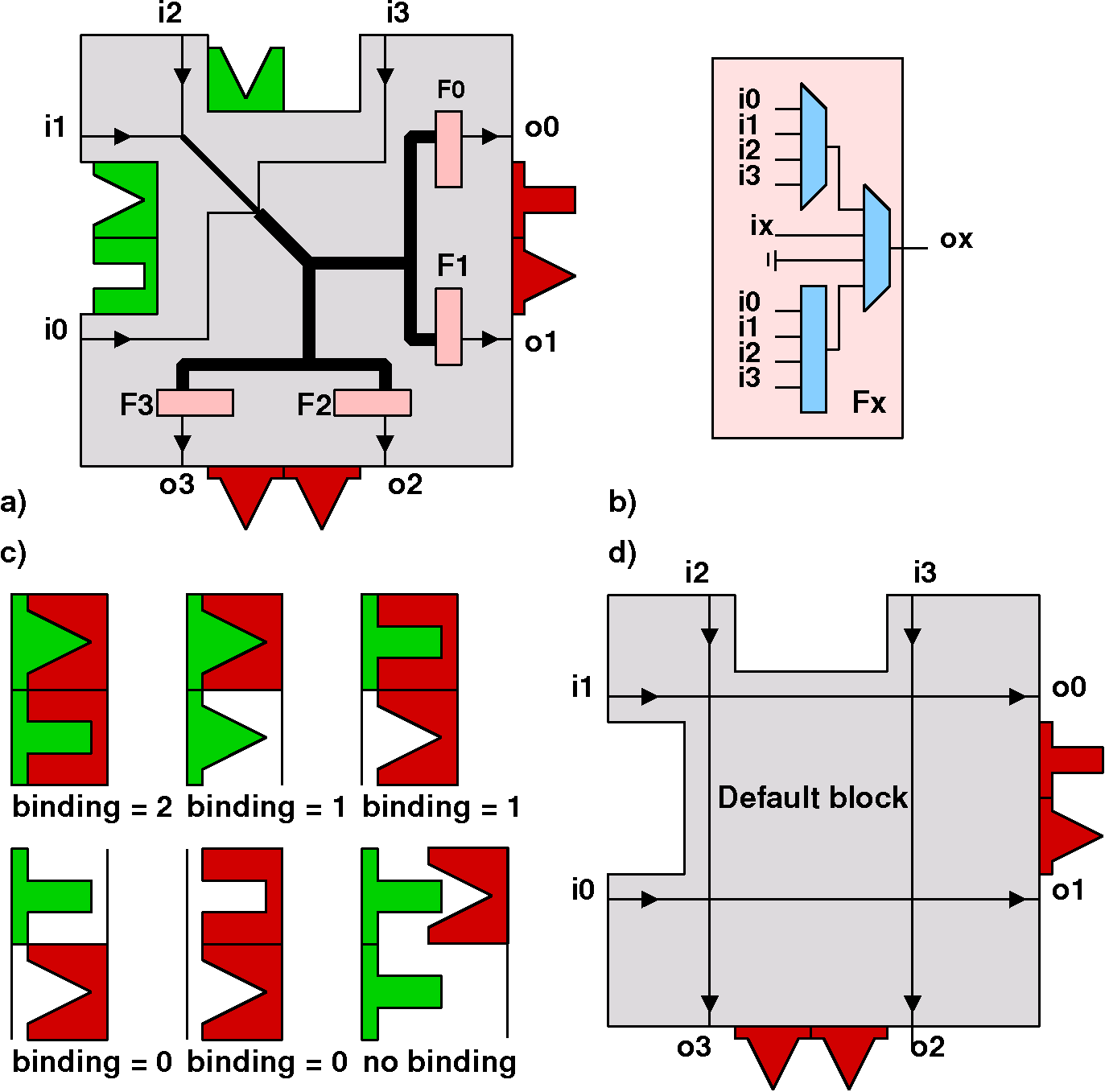
Fig. 1: a) the basic structure of a SLB. Four outputs give signals that are logical functions of the four inputs and the edges of a SLB are equipped with recognition sites, which can be imagined as plug/socket structure or complementary adhesion sites. b) The evolvable logic of each output favors routing in a generic manner, specifying either: a specific one out of the four inputs, the input directly opposed to the output under consideration, a default signal (ground, which represents zero throughout the whole paper), or a fully evolvable four bit function generator. c) Recognition is realized in a permissive manner, plugs and sockets have to match, but not every position in the recognition sequence needs to be occupied by a recognition element. The number of matching plug/socket pairs gives a binding energy (or quality) employed to resolve binding ambiguities d) A default SLB, only transmitting signals, is used if no other components match with a given configuration of recognition sites appearing in the self-assembly process.

